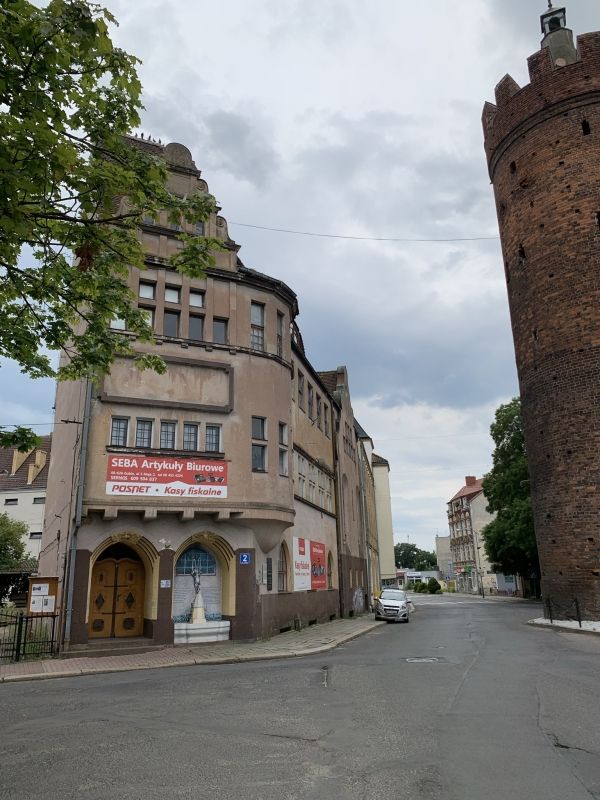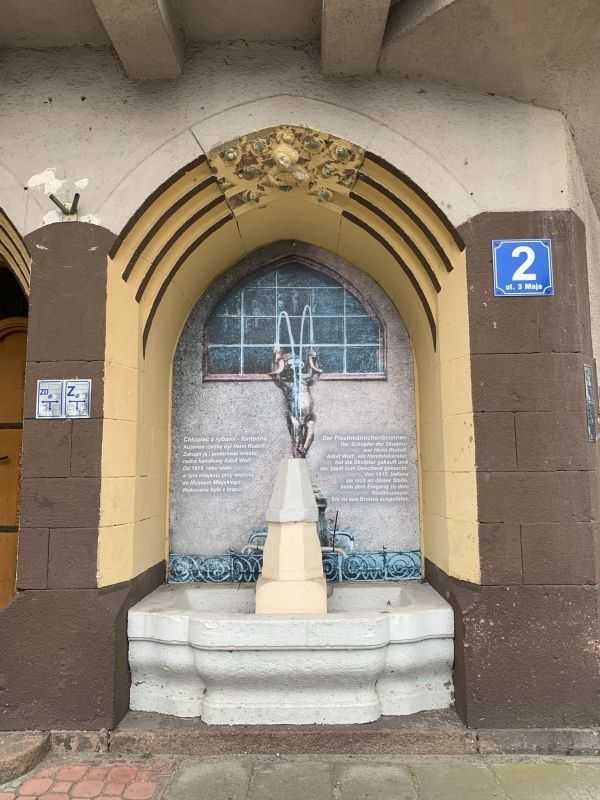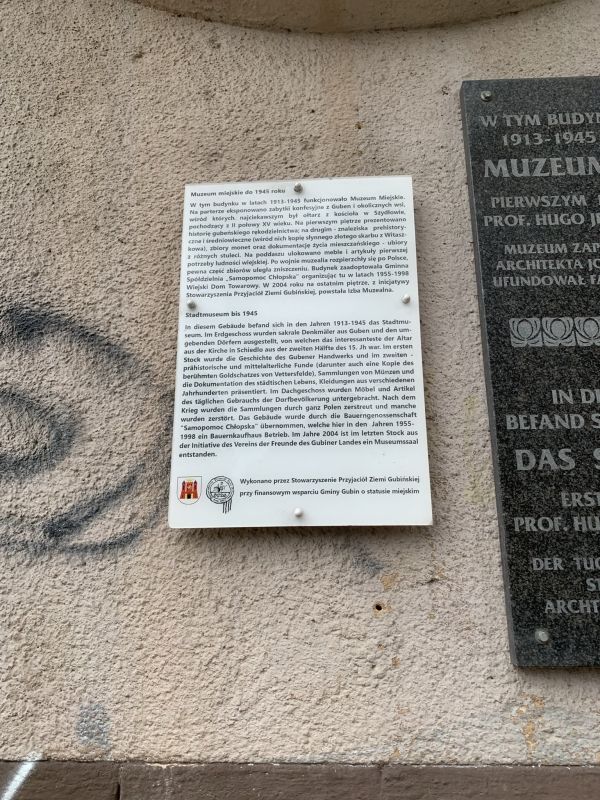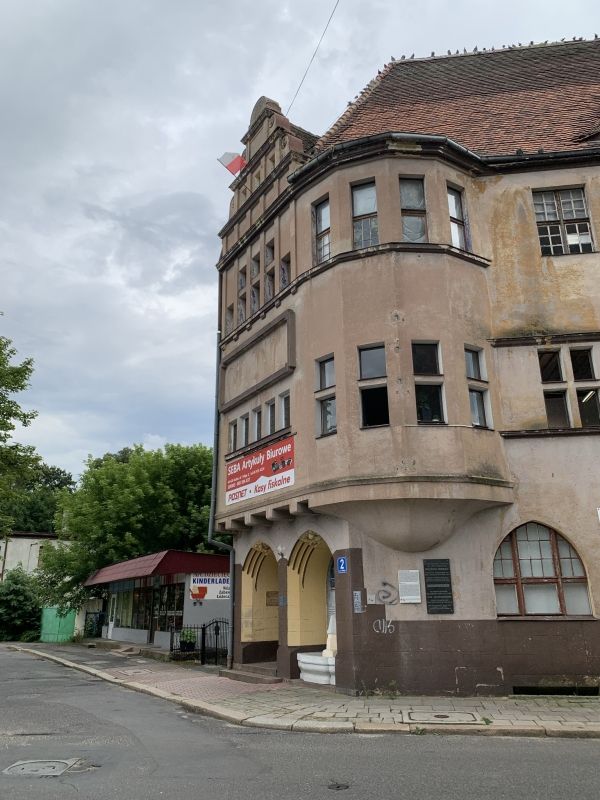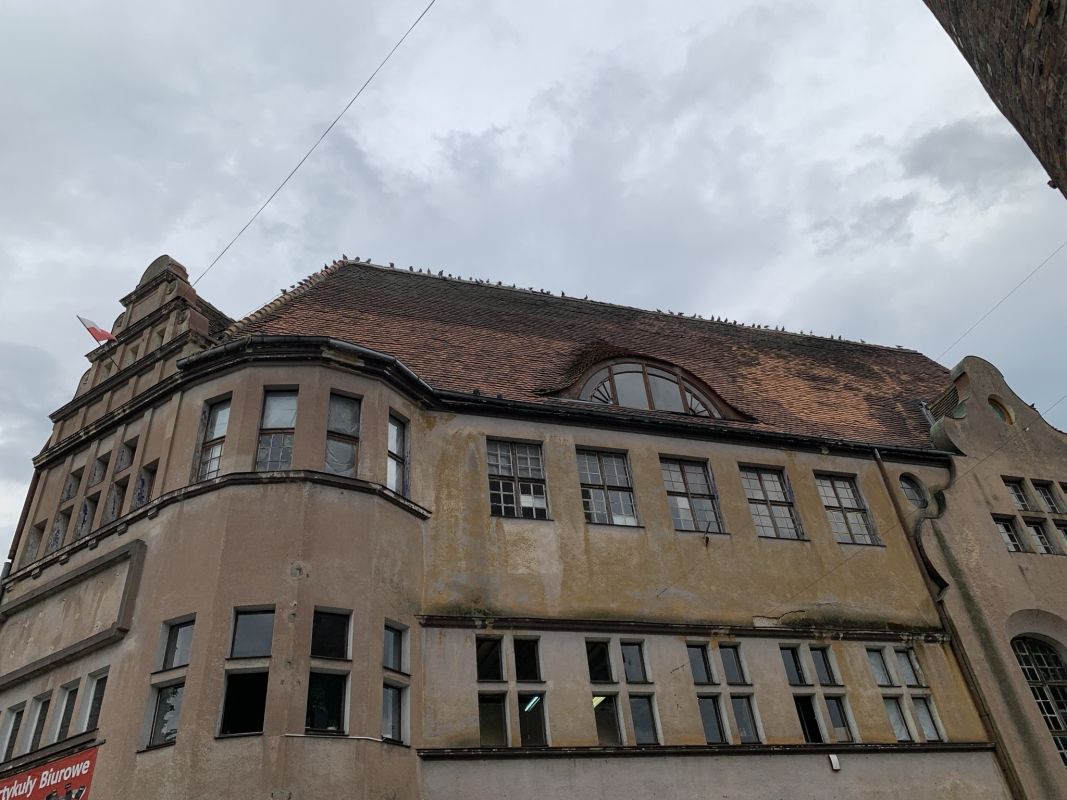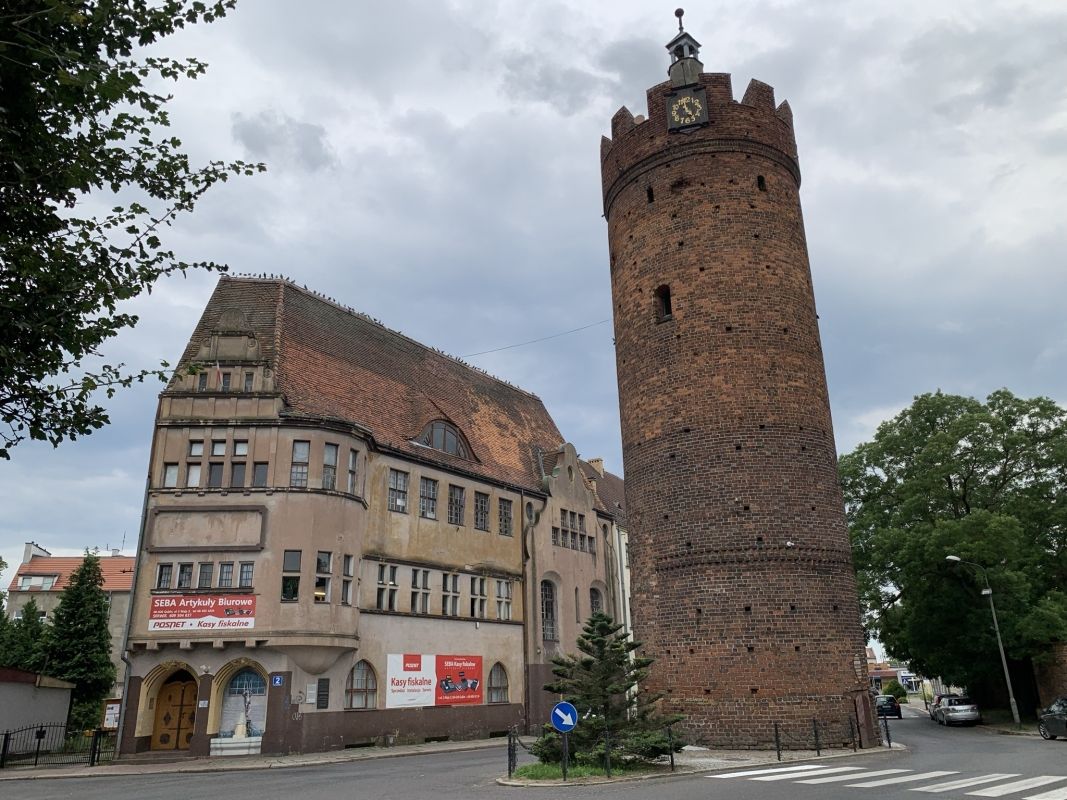
City Museum and Museum Chamber of the Association of Friends of the Gubin Region (Pol. Stowarzyszenia Przyjaciół Ziemi Gubińskiej, SPZG)
Tourist attractions

Description
The building, on the third floor of which is the Museum Chamber of the Association of Polish Geological Organizations (Pol. Stowarzyszenia Przyjaciół Ziemi Gubińskiej, SPZG), is located in the very center of Gubin, next to the Ostrowska Gate Tower. The building is a four-storey, plastered building erected in 1913, built in the reform style (Ger.: Reformarchitektur). Its façade is characterized by a composition of subtly baroque gables and pilasters; the detail of window and door openings in the lower storeys refers to the German architectural traditionalism (Ger.: Heimatschutzarchitektur).
The Museum Chamber of the SPZG itself was established in 2004 on the initiative of its members. It consists of two exhibition rooms, offices, sanitary facilities and back-up facilities. The hall leading to the main entrance includes a themed exhibition. Moving on, the chamber opens onto the main exhibition hall, the artifacts of which are organized according to the following categories: "Prehistory" (Ger.: Urgeschichte), "History of the City" (Ger.: Stadtgeschichte), "Applied Art" (Ger.: nutzbare Gegenstände), "Places" (Ger.: Orte), "Honorary Citizens of Gubin" (Ger.: Ehrenbürger von Gubin) and "Our City "(Ger.: Unsere Stadt). The room is also equipped with a projector, computer, and table, thus serving for meetings and conferences.
The second room, with a separate entrance from the staircase, was fully devoted to the units of the Polish Army stationed in the years 1945-2002. In its collections, apart from very interestingly described information boards presenting the chronological history of the Gubin garrison, you can see, among others, weapons from the period of World War II, original uniforms, orders and badges, a copy of the banner of the 5th Kresowa Mechanized Division King Bolesław Chrobry.
You can read more about the Museum Chamber on the website of SPZG https://www.spzg-gubin.pl/.
Historical background
The history of the creation of museum culture in the Guben-Gubin Eurome goes back to the end of the 19th century, when a local high school teacher, historian, and researcher of history, prof. Dr. Hugo Jentsch, made available his collection of archaeological finds from prehistoric times within the walls of the gymnasium in Guben. It included vessels, fossils, bronze and iron objects, and weapons. Jentsch himself was the author of many history books, focusing his attention primarily on Guben and Lower Lusatia. He was also one of the founders of the Lower Lusatian Association for Local and National History (Ger.: Niederlausitzer Gesellschaft für Geschichte und Landeskunde) based in Cottbus, dealing with the popularization of knowledge about the history and culture of Lower Lusatia.
On May 1, 1900, Jentsch transferred his collection to a small museum in a building at 12 Markt Str. (now Plac św. Jana Pawła II). With time, however, the number of collections presented there increased so much that the overcrowded exhibition lost its substantive value. The Guben factory owner Adolf Wolf, who sponsored the construction of a four-storey building in the very heart of Guben, at Konigstrasse (currently 3 Maja 2 Str.), faced the need to expand the museum exhibition. The plot for the construction of the new museum building was donated by Pohl, the master locksmith. The building was put into use in 1913, when Jentsch took a well-deserved retirement. The museum operated until 1945. After the defeat of the war, the Germans deported from Gubin, apart from their possessions, tried to take as many museum collections as possible. Some of them ended up in Berlin, while some survived in Poznań, Nowa Sól and Zielona Góra.
After World War II, the building was taken over by the Gmina Spółdzielnia, re-functionalising it into a Rural Department Store.
It was not until 24.09. 2004, at the initiative of the SPZG, that a small part of the building was turned into a museum.
3 Maja 2, 66-620 Gubin, Poland
City Museum and Museum Chamber of the Association of Friends of the Gubin Region (Pol. Stowarzyszenia Przyjaciół Ziemi Gubińskiej, SPZG)
City Museum: 04.02.1913
Museum Chamber of SPZG: 2004
Approximately 45 m x 8,5 m at the base
The Museum Chamber of SPZG is open on Mondays, Wednesdays, and Fridays from 10:00 to 14:30.
Telephone arrangements: +48 68 455 81 62.



